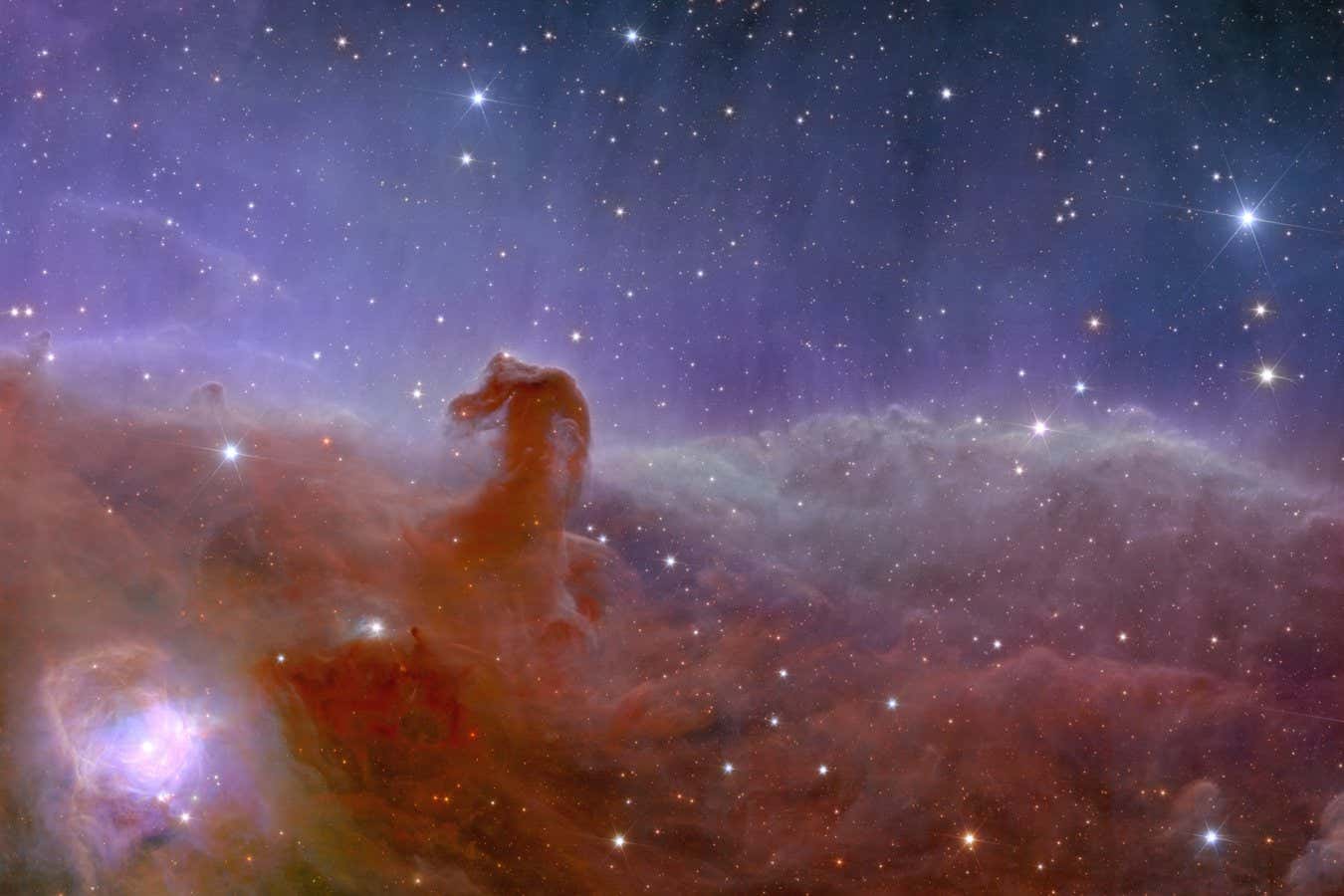The European Space Agency’s Euclid space telescope has released five of its first science images, including an iconic nebula and glistening galaxies
By Leah Crane
7 November 2023
The Horsehead Nebula
ESA/Euclid/Euclid Consortium/NASA; J.-C. Cuillandre (CEA Paris-Saclay), G. Anselmi; CC BY-SA 3.0 IGO
Dark matter and dark energy are invisible, hence the moniker “dark”, so the only way to trace their behaviour is through images of visible objects like the ones that Euclid has now released. The first of these images shows the Horsehead Nebula, which lies 1375 light years from Earth in the Orion constellation. This nebula is well known, but the incredible detail in this new image may allow scientists to spot new stars and even young planets.
Advertisement
Globular cluster NGC 6397 ESA/Euclid/Euclid Consortium/NASA; J.-C. Cuillandre (CEA Paris-Saclay), G. Anselmi; CC BY-SA 3.0 IGO
This glittering clump of hundreds of thousands of stars is a globular cluster called NGC 6397. The sheer scale of these clusters means it is difficult to capture them in detail without many observations, but Euclid’s large field of view makes it possible. Researchers aren’t sure whether globular clusters are embedded in haloes of dark matter, a question that Euclid’s measurements could help answer.
The “Hidden galaxy”, IC 342 (left), and the irregular galaxy NGC 6822 (right) ESA/Euclid/Euclid Consortium/NASA; J.-C. Cuillandre (CEA Paris-Saclay), G. Anselmi; CC BY-SA 3.0 IGO
